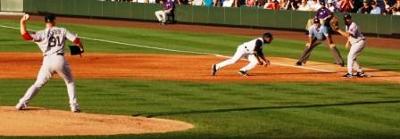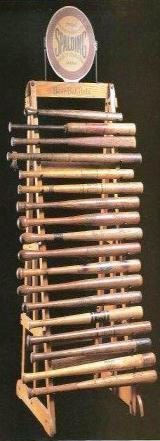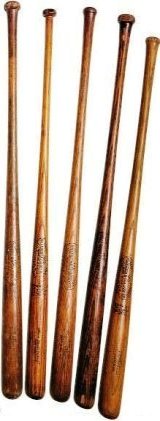When do you run?
by Nick
(Phoenix)

Photo Bill Stanton: Checkswing.com
Nick asked: Okay, so I've got a question. :)
There's a runner on first base. No outs. That's all.
So when let's say in this case, the batter gets to hit the ball. It's a pop-up in the infield.
Does the runner get to run immediately, or does he wait for the ball to fall? Is there a rule stating something like that, waiting before you can run? (1)
And in the event that the ball does get caught in a fly-out, is there any way at all that the runner can advance to his next base? (2)
And what's the deal with stealing? Correct me if I'm wrong, but you can start running once the ball gets pitched out of the pitcher's hand? (3)
And so the runner tries to steal second. If the batter fails to hit the ball, the catcher must immediately pass the ball to second, right, to attempt to tag the runner out? (4)
What if the batter does hit the ball? (5)
Thanks for answering my questions! I'm really sorry if they are kinda stupid in terms of baseball fundamentals, but it just confuses me. Your page is awesome. I love it.
Rick answered: Nick, thank you for your questions. I am glad you enjoyed the site.
Your questions are good ones. Baseball can sometimes appear confusing if you have had limited experience around it. It can get even more complicated as rules come into play.
Lets start with your first situation. runner on first, no outs.
Batter hits a pop fly to the infield.
The runner in this case needs to do one of two things, 1: Get a short distance off the base and wait to see if the ball is caught by the infielder. If it is, he needs to return to first base, or 2: Tag up at first base immediately to see if the ball is caught or not.
Here is why the runner does as he does. If the ball is caught before it hits the ground, the runner must go back to first base and tag up, before he can attempt to advance.
Generally speaking, with the pop fly in the infield, the runner goes with option 1, gets a short distance from first base and see if the ball is caught. If caught he returns to first, if not, he must attempt to advance to second base before the defense can throw the ball to second for the force out on the runner.
Tagging up is the way a runner can advance on a fly out. Seldom used on a fly ball to the infield, as the throw to get the runner out is so close. Most always, the tag and advance situation is for a fly ball in the outfield. The runner must have a foot in contact with the base, until the ball is caught by the fielder. Once the catch is made, the runner can attempt to reach the next base.
If the runner leaves the base before the catch is made, the defense can appeal the play, and if the umpire saw that he left early, he is called out.
With your question on stealing, it sounds like you are referring to Little League. At that level, runners must stay in contact with their base until the ball leaves the pitchers hand, at which time they can go.
Older leagues on up through MLB, the runners are able to leadoff, can go at any point. Generally that point is when the pitcher picks up his front foot to start to deliver the pitch. There are a lot of nuances surrounding the art of stealing bases; but that is the basis of it.
So, the runner does steal. If the defense wishes to get him out, the catcher must throw the ball to the base he is running to, where the fielder there must catch it, tag the runner with the ball in his glove, before the runner touches the base.
If the tag is before he touches the base, the runner is out. If it is after he touches the base, the runner is safe, credited with a stolen base.
If, when the runner starts to steal, and the batter hits the ball, all sorts of things can happen, depending on what and where the hit is and goes. A few things:
1. Fly ball, runner needs to tag up
2. Ground ball, runner needs to try and advance to next base or more
3. Base hit, advance at least to the next base or more, if possible
4. Home run, get around the bases, touching them all before the batter who hit the ball does the same.
5. Line drive, with less than 2 outs, freeze and try to get back to the base you came from, if the line drive is a ball that is going to be caught.
Hope that helps take some of the confusion out of the game for you.
Baseball is an easy game to play; but a hard game to master.
Some of that comes from all the subtle nuances involved with understanding and applying the rules within your game.
Yours in baseball,
Rick





